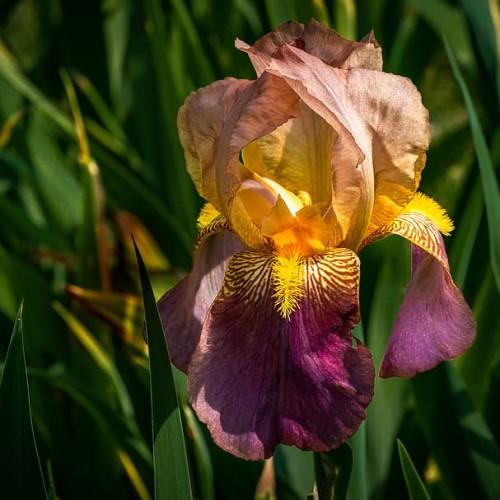
tall bearded reblooming iris
Iris 'Blatant'
Cycle:
Herbaceous Perennial
Watering:
Average
Hardiness Zone:
3 - 10
Flowers:
Flowers In Spring
Sun:
Full sun
Leaf:
Yes
Growth Rate:
High
Maintenance:
Moderate
Drought Tolerant:
Yes
Care Level:
Medium
watering
The tall bearded reblooming iris (Iris 'Blatant') needs to be watered regularly to keep it blooming at its best. It is best to water the plant deeply once or twice a week, ensuring the entire root zone is wet, in spring and summer when the temperatures are high and it is actively growing. In late autumn and early winter, reduce watering to once every 10 days or so. Always check the soil for moisture before watering; if the soil is still damp, it isn't necessary to water. For best growth, water the plant at minimum, but never let the roots totally dry out. Make sure the soil always drains well but not too quickly, so it does not leave the roots dried out.
sunlight
Tall bearded reblooming iris (Iris 'Blatant') should be planted in a sunny location. They do best in full sun (6 to 8 hours of direct sunlight per day) with some afternoon shade. In hot, sunny climates, they may appreciate some afternoon shade to prevent scorching. They require well-drained, loose soil with an ideal pH range of 6.0 to 7.0. Mulching in the spring is beneficial for moisture retention. Tall bearded reblooming irises prefer to be watered frequently, but very lightly. Avoid soggy soil or overly wet soil conditions. During the summer months, apply a balanced fertilizer after flowering and once more at the end of the growing season.
pruning
Tall bearded reblooming iris plants (Iris 'Blatant') should be pruned once annually in early spring, just before growth begins in the season. Pruning should be done by cutting stems back to about 4 inches high. Make sure to remove any dead or discolored foliage, as well as any stems that appear diseased or damaged. Reblooming iris plants tend to require more pruning than other iris varieties, as they produce masses of flowers and foliage during flowering season. Furthermore, the plants should be divided every 3 to 4 years to maintain healthy growth.
